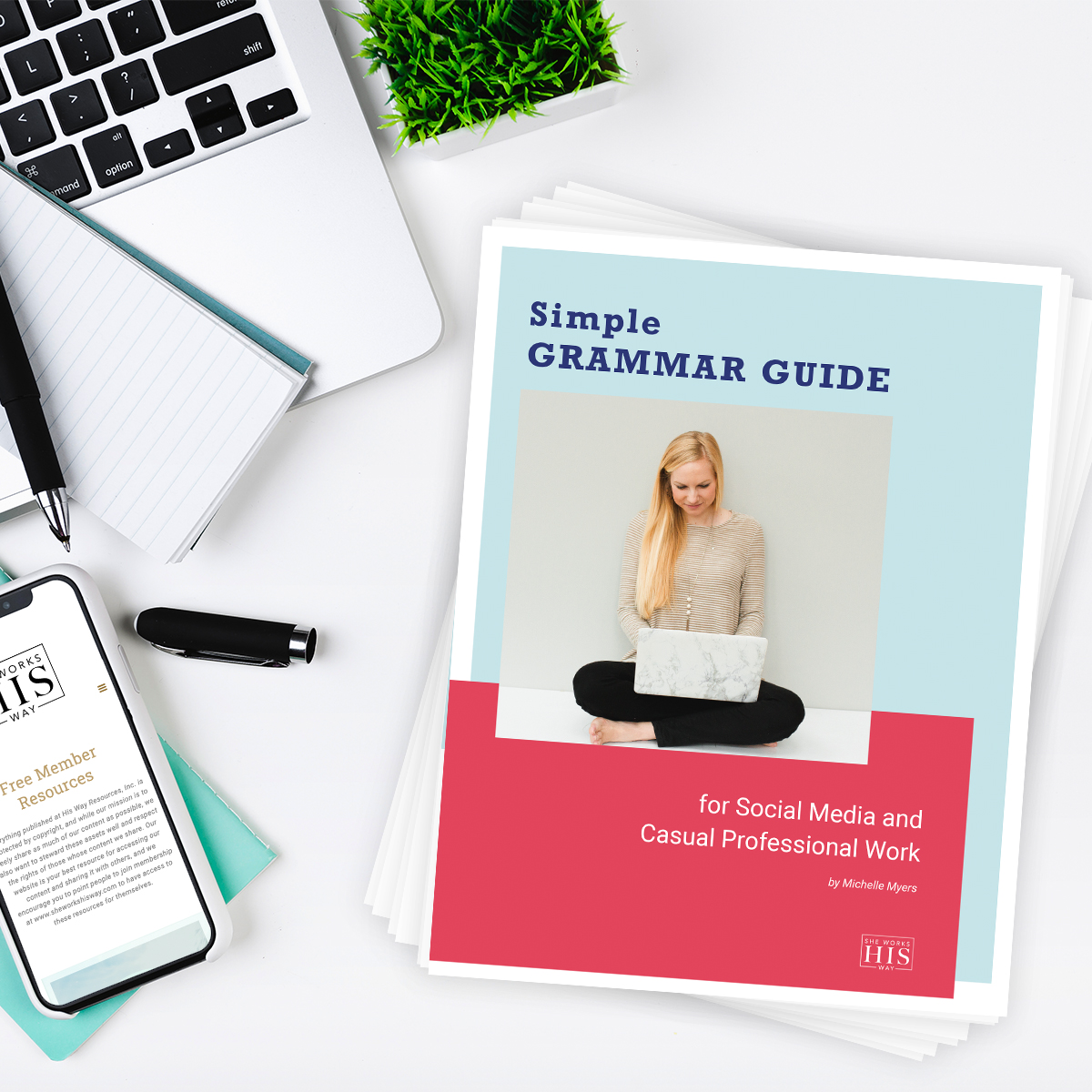Formal writing is fine in formal settings, but in informal settings, it’s definitely not. And there’s a way to be informal without crossing over to being unprofessional. So for professional writing that’s more casual in nature (social media, blogs, etc.), our very own words expert, Michelle Myers, created a simple grammar guide to help our she works His way members know which rules to keep, which rules to [sometimes] break + as well as a few basic proofreading tips to help maximize her casual content.
Here’s a little snippet of what she shared. To get the rest of this resource, you can join here and get immediate access to it + dozens of other helpful resources for working women inside of our swHw Resource Library.
Talk to text is a speaker’s BFF.
Most communicators have a natural strength – speaking or writing – and then spend the rest of their lives developing the other as a skill. Maybe you are a formal writer and struggle to write casually. Or maybe you feel like you always know what to say, but then you sit down to type, and you feel like your fingers take forever to type what’s so much easier for you to say. Try using the notes app on your phone with the talk to text feature. You speak, and boom – it’s written! Then, simply transfer it into a writing software, and follow the remaining editing steps.
Oh, and as far as replying to DMs on social media? Use the audio and video features to save time – and bonus, you’ll blow away your audience with the personal touch.
Emails are the same story. If you waste too much time trying to write email replies, invest in a video-reply software like BombBomb.
Put a break between writing and editing.
Ideally, edit on a different day than you write. Writing exercises the creative part of your brain, while editing requires the analytical part of your brain. It’s difficult to switch back and forth between the two interchangeably or quickly — which is also why writing will take you longer or frustrate you more if you attempt to edit as you go. If you’re crunched for time, as soon as you finish writing, step away from your desk for at least 10 minutes. Go ask a co-worker a question, step outside, or get some water or coffee to take back to your desk, and then, start editing.
Use the tools available to you.
The majority of software for content creation (Pages, Word, etc.) come with a loaded spelling and grammar check feature. Use it first – it will catch a lot of mistakes, even in formatting – and bonus! It saves you the brain space of having to make the correction yourself. If you create a lot of content and feel like grammar is a personal weakness, Grammarly is a great 2.0 tool that will catch more mistakes than standard tools.
Read your writing aloud.
Your brain can play tricks on you – especially when you’re the one editing your own writing – and as you edit, you will see what you meant to say instead of what you’ve actually written. Reading your writing aloud will help you catch many of the mistakes you miss after simply scanning the text and silently reading.
Can it be said simpler?
Casual writing is typically read while your reader is multi-tasking. People rarely check their emails or scroll social media with undivided attention. If a sentence really isn’t necessary, remove it. If something can be said more clearly or shorter, do it. Most people are scanning your content anyway – they’re not reading every word. So whenever possible, make it simpler and make it scannable. Appeal to the mode of reading they’re using anyway. Sometimes, more is better. But most of the time, it’s not.
Want more? Join swHw today and download the entire Simplified Grammar Guide for Informal Professional Writing resource before your next writing project is due. Michelle broke down everything from the colon to the dash, words that are commonly used + commonly confused, giving examples that will teach you while also making you laugh, amen, and everything between. (Bonus points if you can find the early 2000s rap reference!)
Happy writing, friends!

